by bria4123 on November 8, 2012
After all the posts about the world’s cultural wealth, let’s get tasteless.
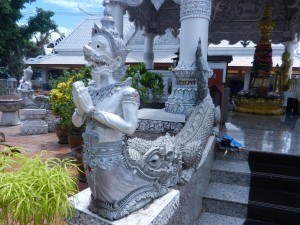
Many historic temples grace the northern Thai town of Nan, so I spent several days there. Wat Ming Muang was low on my list because Michael Freeman, in “A Guide to Northern Thailand and the Ancient Kingdom of Lanna” wrote that it’s “in stunningly bad taste”. But I enjoyed it, and my tastes aren’t that bad. No pink flamingos in front of my house. But taste and judgements about what’s beautiful are greatly influenced by culture. Thai thought patterns are unique, and often difficult for outsiders to understand. A closer look at Wat Ming Muang will give us a perspective on a fascinating world. [click to continue…]
by bria4123 on November 7, 2012
China’s Song Dynasty had the Grand Canal, the Yangtze and the Yellow River to help unify it. Naples, Italy had its funicular railway. But Chinese and Italian cultures have shared some very important things to unify themselves with.
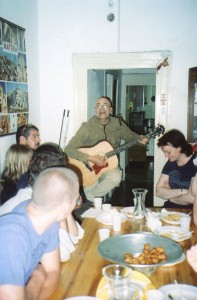
Noodles/pasta served with love. Two very distant cultures and cuisines, yet both consider these respective dishes comfort foods. Mothers in both lands serve them with love. And so did Giovanni when I stayed in his home in Naples. Nights there became some of my warmest memories of Italy. [click to continue…]
by bria4123 on November 7, 2012
The city of Kaifeng was high on my list of places to visit on this last trip through China.
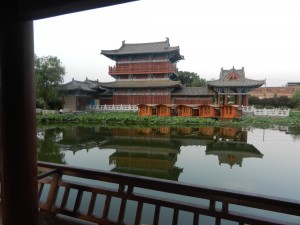
It presided as the capital of the Northern Song Dynasty. So I expected to meet many spirits there, but not Jimi Hendrix’s. [click to continue…]
by bria4123 on November 7, 2012
My bus ride from Vientaine to Luang Prabang took 12 hours. We chugged along roads that snaked through rugged mountains the whole way.
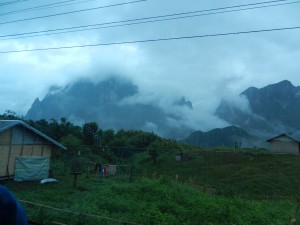
The scenery was sublime, but the boy in the seat behind me threw up in a bag, and the old woman sitting next to me tired out, leaned over and put her head on my shoulder. So I can tell you firsthand that Laos is a hard land to unify. Its people thus came up with interesting stories and folk traditions to make sense of their world. [click to continue…]
by bria4123 on November 6, 2012
Many fans of Laotian art say that Luang Prabang’s Wat Xieng Thong is the most beautiful temple in the country.
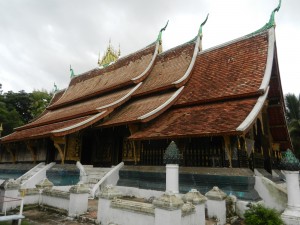
It was built by King Setthathirat in 1559. He ruled the Lan Xang kingdom, and he strengthened Buddhist practices and linked them with his court’s image. Many Southeast Asian monarchs fused religious and royal institutions in the 16th century to consolidate their holdings. But Setthathirat knew that his people’s folklore was so rich that he had to compromise with it, rather than try to wipe it out. Behind Wat Xieng Thong’s beautiful forms were centuries of popular beliefs which preceded Buddhism. Both blended in some very cool ways. [click to continue…]
by bria4123 on November 5, 2012
Exploring villages in the mountains around Luang Prabang gave me some of my favorite experiences in Laos. But I needed energy towards the end of the day.

I saw a crowd in the local schoolyard and ventured inside. Within seconds someone invited me to join the party. [click to continue…]
by bria4123 on November 5, 2012
The section of Hampton Court Palace that England’s king William III (1689-1702) built looks like the Western tradition’s most common model of truth and order.
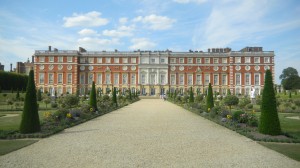
Geometrically proportioned, permanent and beautiful–just like the laws of physics Isaac Newton was discovering around the same time. And like the measured verses the poet John Dryden was crafting. England after the monarchy’s restoration in 1660 was reaffirming the West’s assumptions about the basis of reality. So what’s up with these snakes?
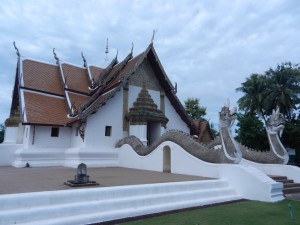
The serpents slithering from Wat Phumin in Nan, Thailand express another culture’s way of ordering the world. Judging from the number of beer-sloshing British tourists I saw in Chiang Mai, Thai perspectives have all the wealth of Buckingham Palace. [click to continue…]
by bria4123 on November 5, 2012
I admit that I don’t find this topic as pretty as yesterday’s, but it’s too pervasive in Thailand to ignore.
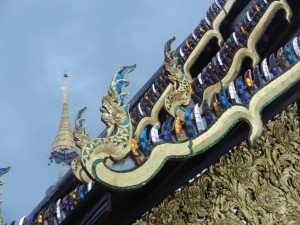
I saw these serpents in temples all over Thailand, including Chiang Mai’s Wat Duang Di (above). They’re key parts of perspectives that Thai temples give about how the world is ordered. [click to continue…]
by bria4123 on November 4, 2012
Is this beautiful statue a fantasy that monks indulge in as they amble by? I saw sculptures of beautiful women wringing water from their long silky hair in temples all over Thailand, Cambodia and Laos.
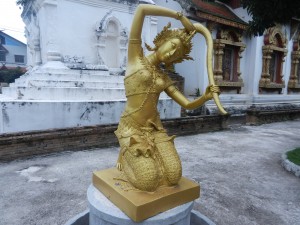
This statue actually has deep meanings which take you into some of Southeast Asian cultures’ most ancient roots–one of the world’s most fasinating regions. [click to continue…]
by bria4123 on November 3, 2012
Chiang Mai’s history goes back to the 13th century–the same time when Italian artists were using ancient Roman forms to organize the world as their cities were growing.
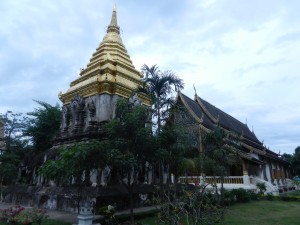
King Mangrai established it in 1296 and founded Wat Chiang Man (above) in the next year, near his palace (the gilded roofed stupa is a 19th century replica of the original 15th century structure). Stories about the founding of Chiang Mai show that northern Thailand was integrated with different ideas than what the West has emphasized. [click to continue…]











